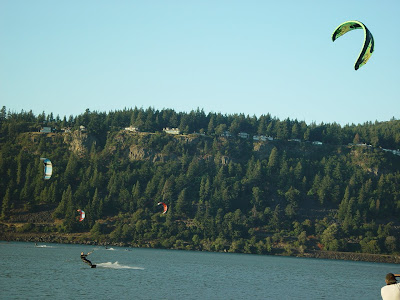 This is the last cabin we stayed in. It is in Zion River Resort which is just west of Zion National park about 10 miles. It is a very nice RV resort.
This is the last cabin we stayed in. It is in Zion River Resort which is just west of Zion National park about 10 miles. It is a very nice RV resort.
 We traveled through Zion National Park but didn't have time do any sightseeing this trip. Zion is one of our favorite national parks.
We traveled through Zion National Park but didn't have time do any sightseeing this trip. Zion is one of our favorite national parks. This bridge is in Page Arizona. It goes over Marble Canyon and the Colorado River just below the Glen Canyon Dam.
This bridge is in Page Arizona. It goes over Marble Canyon and the Colorado River just below the Glen Canyon Dam. This is the Glen Canyon Dam and Lake Powell. From Page, we went south to Flagstaff and I-40 to make a quick trip home. We headed east on I-40 for about 3 hours and got off at Gallup NM to spend the night. As we slowed down on the exit ramp I noticed the bike was not handling as well as usual. Jane also noticed it and asked what was going on. I told her I suspected that we had a tire problem. We had put new tires on the bike on Memorial Day weekend and they only had about 9k miles on them at this point. After we got our luggage into the hotel, I went back out to inspect the tires. On the rear tire I found 4 splits about 1-1/2" to 2" inches long. The following picture shows two of them. We are thankful for guardian angels!
This is the Glen Canyon Dam and Lake Powell. From Page, we went south to Flagstaff and I-40 to make a quick trip home. We headed east on I-40 for about 3 hours and got off at Gallup NM to spend the night. As we slowed down on the exit ramp I noticed the bike was not handling as well as usual. Jane also noticed it and asked what was going on. I told her I suspected that we had a tire problem. We had put new tires on the bike on Memorial Day weekend and they only had about 9k miles on them at this point. After we got our luggage into the hotel, I went back out to inspect the tires. On the rear tire I found 4 splits about 1-1/2" to 2" inches long. The following picture shows two of them. We are thankful for guardian angels!It was too late in the day to contact any motorcycle shops to locate a new tire so I had to wait until the next morning. There were two shops in Gallup but neither of them had a tire to fit our bike. I called Albuquerque and found a tire. I rented a pickup truck and drove 150 miles to Albuquerque, picked up the tire, and drove 150 miles back to Gallup. We took the bike to one of the shops I had called earlier in the day and they installed the tire for us. We left Gallup at about 4:30PM and rode to Albuquerque to spend the night.
We intended to drop south to visit Judy and Steve (my sister and brother-in-law) in Shreveport, LA, but since we had lost a day due to the tire problem, we had to skip that part of the trip and take the shortest route home.

We didn't have any trouble buying gas until we got to Nashville. We were on the east side of Nashville and I needed gas. I got off I-24 and found one of the two stations closed and the other with a long line down the street. I rode on looking for gas and after several miles of nothing but closed stations or stations with long lines, I realized we were going to have to get in line and wait, because I didn't have enough gas left to get back on I-24 and continue toward home. We sat in line for about 40 minutes to purchase the tank of gas that would get us home.
 I washed the bike a couple of times on the trip, but the last 5 or 6 days we were pushing to get home and didn't take time to wash the bike. I try to keep it clean but sometimes I can't.
I washed the bike a couple of times on the trip, but the last 5 or 6 days we were pushing to get home and didn't take time to wash the bike. I try to keep it clean but sometimes I can't.
I can't have a beard or goatee at work due to food safety rules, but I usually grow one when I am on vacation. This time it has a lot more gray in it than previously.










































